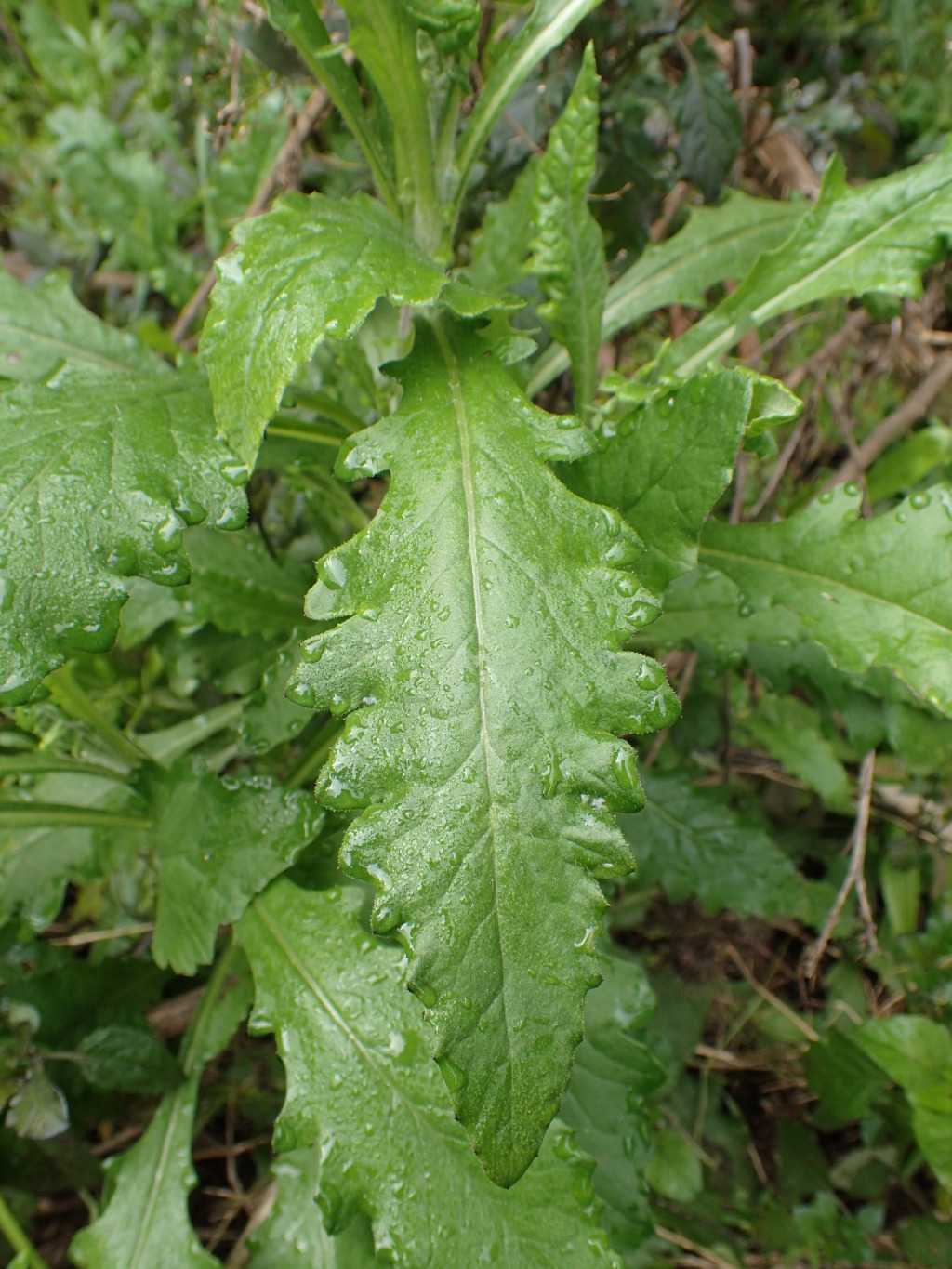Senecio biserratus
Belcher Jagged FireweedErect annual, or sometimes (in wet places) rhizomatous perennial herb to 1(–1.6) m high, glabrous or nearly so, uncommonly sparsely cobwebbed or hispid. Leaves sessile or pseudopetiolate, auriculate, ovate to lanceolate or elliptic in outline, 6–14 cm long, 2.5–5 cm wide (rarely more in shade forms), coarsely biserrate to deeply lobed, if the latter then lobes irregularly serrate; surfaces glabrescent or sparsely hairy along veins, rarely shortly hispid above. Inflorescence corymbose, typically 5–20 cm across, with more than 100 capitula; capitula non-radiate; involucre cylindric, 6–7.5 mm long, glabrous (bracteoles sometimes cobwebbed); bracts 7–9; bracteoles present; florets 18–35, bisexual and unisexual. Cypselas fusiform, 2–3 mm long, brown, broadly ribbed, papillose-hairy in intervening grooves; pappus of slender hairs 5–6 mm long, deciduous. Flowers mostly Oct.–Mar.
Wim, GleP, Brid, VVP, GipP, OtP, WaP, Gold, CVU, GGr, DunT, EGL, EGU, WPro, HSF, HNF, OtR, Strz, MonT, VAlp. Also SA, NSW, Tas. New Zealand. Common along the coast on rear-dunes and swales (particularly east from Port Phillip Bay), but occasionally inland, extending to alps, where usually inhabiting damp to wet sites.
Senecio orarius J.M. Black was shown by Lawrence (1980) to be a hybrid between S. biserratus and S. pinnatifolius A. Rich. The hybrids are intermediate in foliage morphology and have capitula with very shortly ligulate (1–4 mm long) outer florets. They have been collected along the coast usually in close proximity to both parent species.
Walsh, N.G. (1999). Senecio. In: Walsh, N.G.; Entwisle, T.J., Flora of Victoria Vol. 4, Cornaceae to Asteraceae, pp. 941–965. Inkata Press, Melbourne.
 Spinning
Spinning



